How to thaw a frozen water supply: a review of the most effective methods
Are you familiar with the situation when the water supply from the tap stops when the temperature outside is below freezing? This problem occurs in your home with the onset of cold weather, but you don’t know how to quickly fix it? To combat this, it is necessary to select an effective method for restoring the functionality of the water supply network. Do you agree?
We will tell you how to thaw a frozen pipeline and how to prevent a problem situation from occurring in the future. We will tell you about effective ways to quickly restore the water supply on a cold winter day for sanitary and hygienic purposes and cooking.
Our article provides a selection of the best ways to help you cope with this problem on your own. Methods for pipelines made of various materials are considered. So that you can better understand the nuances of warming up, we have selected visual photos and thematic videos detailing recommendations for rescuing a water supply system from ice captivity.
The content of the article:
Reasons for system freezing
With a sharp onset of frost, complemented by strong winds, cases of freezing autonomous water supply systems with the formation of ice plugs inside them are not uncommon.
Water frozen as a result of improper installation or operation of the pipeline will, at best, make it impossible to use the system, and at worst, it will force the break to be repaired.
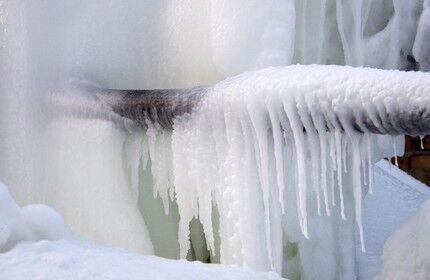
There can be several reasons for water freezing in the water supply.
The most important among them:
- extremely low temperatures outside;
- laying pipes to a shallower depth than the soil freezing level;
- insufficient insulation of the pipeline;
- low or even zero water consumption.
At night or for a longer period, when the owners do not use the water supply, the water in the pipes remains motionless. At sub-zero temperatures it freezes quickly.

The pipe, located in frozen ground, begins to cool after passing warm flows, and after a short period it acquires a low temperature. As it approaches, small portions of water begin to freeze and crystallize, at some point clogging the entire section of the pipe completely.
How to find a problem area?
The most difficult moment in this matter is to determine the location of freezing in an open area water supply systems. Experienced craftsmen advise focusing on temperature sensations when inspecting and probing the accessible part of the route.
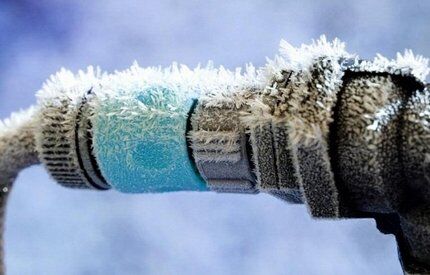
Water pipes usually freeze in areas where the pipes come close to the ground. Technical wells and unheated basements are also vulnerable to frost.
It has been noticed that concrete freezes faster than soil layers. Therefore, if the basement was unreliably insulated or was slightly opened during periods of severe frost, it is quite natural that the pipeline running in it froze.
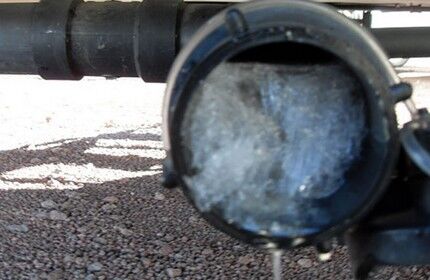
If it is not possible to “calculate” a specific area, use available methods at once on several of the most likely freezing areas.
Effective solutions to the problem
The water supply can be defrosted using external heat, or by defrosting from the inside. Each specific case depends on the length of the frozen area and the material from which the water pipes, and therefore requires the use of different means.
Despite the fact that ice, with the same mass, is more voluminous than water, within its state of aggregation, obeying the laws of physics, it expands before melting.
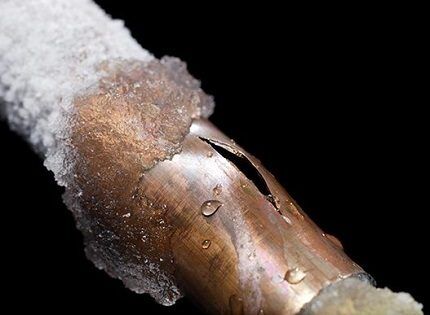
Before starting work, it is imperative to open the water tap or “discharge valve” after the inlet valve in order to determine the effectiveness of the actions performed by the water flowing out of it.
Method #1 - using hot water
If the system freezes in an open area while entering the house, or inside an unheated basement, the easiest way to warm up a section of water supply is to treat the outside with boiling water. Hot water saved water pipes from freezing at all times.
To do this, the pipe is wrapped in several layers with rags and pieces of old rags, which absorb moisture well. A wet rag will prolong the time the pipe walls are in contact with water.

When warming up a frozen section of the pipeline, it is important not to damage it. Areas of the structure that do not require heating must be covered with heat-insulating material. This will prevent the accumulation of pieces of ice moving through the pipeline along with water.
This method is used only in enclosed spaces and with open pipeline laying. And this technology is only suitable for steel pipelines. The system located underground will have to be heated with boiling water for at least 12 hours.
Method #2 - heating with a hair dryer
You can achieve the desired effect with the help of hot air created by a powerful hair dryer. The method is used to heat frozen sections of the pipeline in places where it is quite easy to reach them, for example, when the system is laid inside a building.

To create conditions for ice accumulation to move through the pipe, you need to evenly distribute the flow of hot air, not forgetting to first open all the valves.
Keep in mind that a hair dryer produces a temperature that can range from 100 to 650°C. Therefore, it cannot be used for pipes made of polymer materials.
The construction of an improvised protective casing around the heated area helps to enhance the effect, while reducing heat losses. It will reflect heat, distributing it evenly over the entire surface of the insulated area.
To do this, a small pavilion is temporarily built, the walls of which are made of the same film or metal shields.
When heating the pipeline, special attention should be paid to the entrances to the fittings, turns and narrowings, since the smallest pieces of ice can get stuck inside them. The main thing is to leave the tap open.
When heating steel pipes, some craftsmen use methods of exposure to open fire, using a gas burner or a blowtorch.
But this method can only be used when pipes are openly visible. And the efficiency of using a blowtorch is not very high, since heating even a short area can take up to several hours.
Read the article: 16 best hair dryers: review, comparison of price and quality
Method #3 - using electric current
You can also deal with ice jams using a welding machine. The operating principle of the device is based on the fact that the metal from which the pipe is made is a conductor.
Under the influence of the created electric field, electrons begin to move in a given direction, colliding with ions, they transfer their energy to them. That, in turn, turns into heat, which is released outside.
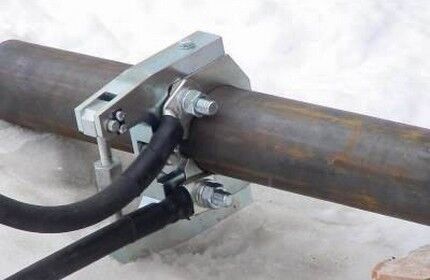
The terminals of the switched-off welding machine are fixed to the ends of the frozen section. First, the power regulator is set to the very minimum, and then, gradually increasing it, the equipment is turned on for approximately 30-40 seconds.
After a short pause, the manipulations are repeated. Depending on the degree of freezing, the current can be adjusted less/more. As the power increases, it is necessary to periodically check the degree of heating of the walls.
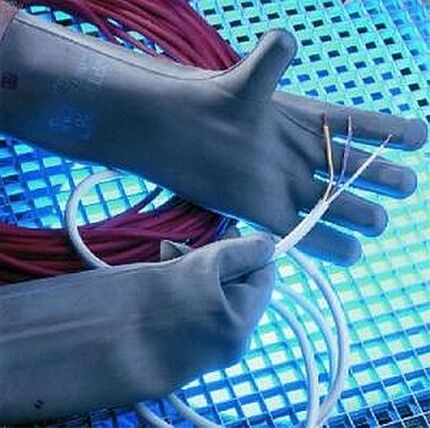
As soon as the melting process is activated, water will begin to flow out of the tap, first one drop at a time, and then in a thin stream. There is no need to completely melt the entire area. It is quite enough to provide a continuous thin stream of water. And moving water will help melt the remnants of unfrozen ice.
The welding machine is used only for heating stainless, steel, copper and other types of pipes made of metal alloys. Using the device on polypropylene products is pointless. After all, plastic is not a conductor. The only thing you get in the end is a damaged pipeline.
Method #4 - “soldier’s boiler” for plastic
The easiest way to heat a plastic pipeline is to use a two-core copper wire with a cross-section of 2.5 mm. According to the principle of operation, it is similar to a conventional boiler.
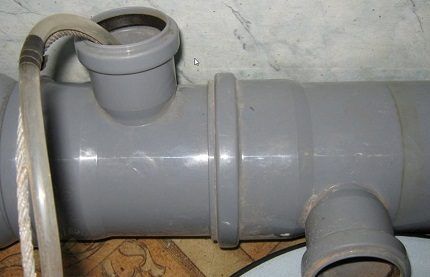
Water, which contains salts, is a weak electrolyte.Therefore, to heat it, you just need to immerse a couple of electrodes in it and then apply voltage to them.
To do this, the wire strands are disconnected:
- The first core is first bent to the side.
- The second core is exposed and wrapped around the pipe, forming 5-6 turns.
- The first core is taken again, exposed and twisted around the pipe in the form of turns.
- A plug is connected to the other end of the wire.
- The created workpiece is pushed into the pipeline until it hits the ice, and is powered from the mains.
When forming turns and placing them on the surface of the pipe, it is important to ensure that they do not touch, otherwise a short circuit will occur at the moment of contact. Ideally, the distance between the turns of the cores should be at least 2-3 mm.
You can additionally use a compressor to blow out melt water.
Method #5 - heating the pipeline from the inside
For heating extended water supply system pipeline, having several bends along its path, you can apply the method of influence from the inside. This method is also effective in defrosting sewer pipes.
To make the device you will need:
- elastic wire D2-4 mm;
- hydraulic level tube;
- Esmarch's irrigator;
- bucket;
- insulating tape.
To assemble the structure, the end of the wire is connected to the hydraulic level tube, fixing the elements with electrical tape. To obtain a more rigid structure, the end of the wire is bent. The end of the tube should be 3-5 centimeters longer than the wire.
One end of the tube with wire is pushed into the water supply until it stops, and the second free end is connected to Esmarch’s mug. If the pipeline is connected by fittings, they must be unscrewed in order to assess how frozen the structure is.

Esmarch's mug is filled with hot water and connected to the tube. The hot water flowing from the rubber tank will flow into the pipeline, warming up the frozen water in it.
In the process of heating the pipeline, it is only necessary to push the pieces of ice further using a wire. As a result of heat treatment of water in the receiving bucket there should be a little more than the volume that was poured for defrosting.
Be prepared for the fact that this method is quite labor-intensive. It will take about 60 minutes to warm up one linear meter of pipe. But the costs of implementing this method are minimal.
This method is a simplified version of flushing pipes with hot water, the temperature of which reaches 150 °C. This procedure is carried out by specialized organizations. They carry out preventive flushing of pipes by supplying hot water under high pressure within 100 atm.
Method #6 - professional equipment
In winter, when there is an urgent need to enjoy water supply facilitiesWithout spending several hours on her resuscitation, you will have to use professional equipment. The use of special equipment - a device - will help to quickly remove the formed ice plugs "The Dragon".
To do this, the clamps of the apparatus are connected to the ends of the area to be heated. After checking the fluid pressure in the system, turn on the device for a few minutes. Depending on the degree of pipe freezing, the period of continuous operation of the device can be 20-40 minutes.

The current strength generated by the device depends on its modification. Moreover, any model is equipped with effective protection, which ensures electrical safety of the device.
If it is necessary to defrost a long section of pipeline, experienced craftsmen recommend using several devices simultaneously.

To remove ice plugs in plastic pipes, use steam generators And hydrodynamic washing devices. But they are used only if it is possible to gain access to the inside of the structure.
In addition, this technique is limited by the length of the cable, and therefore in some situations the pipeline has to be disconnected.
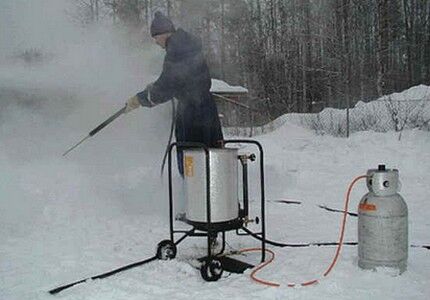
A heat-resistant sleeve equipped with a nozzle moves along the pipe as the ice melts.
The use of such equipment allows you to solve two problems at once:
- Clean the inner surface of the pipes from various types of deposits, thereby improving circulation in the structure.
- Check to see if there are any leaks along the treated area and, if necessary, neutralize them.
Despite all the advantages of professional equipment, its main drawback is its size and cost. If electrical appliances of the “Dragon” type can still be purchased or rented, then a steam generator is a special case. Such equipment is mostly used by professional companies, whose services you will have to use.
How to prevent system freezing?
The possibility of pipeline freezing must be considered at the stage of its installation. According to current SNiP standards, pipes must be laid below the freezing depth.

The depth of freezing of soil layers is determined empirically in the coldest period for the region, taking into account the maximum soil moisture and provided that there is no snow cover. If it is not possible to lay pipes at a sufficient depth, you should take care thermal insulation of the structure.
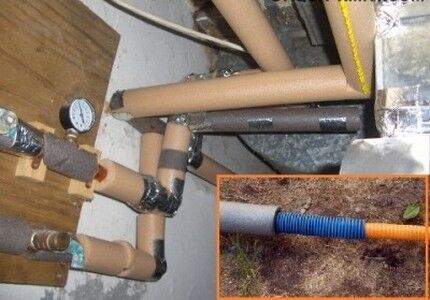
Ideal as a heat insulator:
- foam strips;
- mineral wool;
- glass wool
You should not use rags, sawdust and paper as winding, even for temporary insulation. When the temperature changes, these materials easily absorb moisture from the air, preventing the resulting condensation from evaporating.
You can also find chemicals on sale that prevent water from freezing. But their aggressive composition makes them unacceptable for the plumbing system. It’s better to use a concentrated saline solution, which corrodes ice perfectly. It is supplied through a hose whose diameter is slightly smaller than the cross-section of the pipeline.
In addition, salt water does not freeze at temperatures below zero, so the formation of a plug behind the salt solution is definitely not expected.
Alternatively, lay along the pipeline heating electric cable. It is equipped with temperature sensors that, when the system heats up to a certain temperature, turns it off. The main advantage of self-heating cables is that they are able to adapt to external conditions. And this in no way affects the work of its other parts.
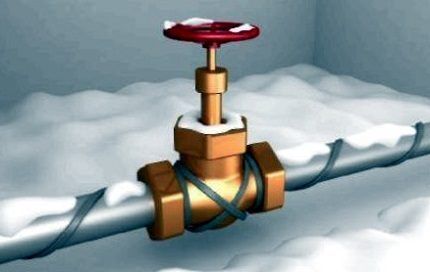
The length of the heating cable can reach 20 meters, thanks to which it can be used to warm up both individual sections of the pipeline and the entire system located in the zone of soil freezing.
Keep in mind that water freezes faster in pipelines with a small diameter. Therefore, when arranging an autonomous water supply, it is preferable to use pipes with a diameter of 50 mm and above.
Since concrete freezes much faster than soil, in places where the pipeline passes through a basement or basement, it is advisable to place sections of the pipe in sleeves - pipes with a slightly larger diameter. The resulting voids can be blown out with polyurethane foam.
In the future, if utility networks are used irregularly during periods of downtime in the cold season, it is necessary to completely remove water from the pipes and keep them dry.
It is necessary to insulate not only the pipeline itself, but also the pipeline itself. water source, and other structural elements located outside the house and in unheated rooms.
Despite the wide range of effective equipment for removing ice blockages from pipes, it is best not to lead to such problems.After all, heating frozen pipes is a rather problematic process, which is aggravated by the difficulty of performing work in the cold.
By following easy-to-follow recommendations, you can prevent pipes from freezing and stopping the system, thereby extending its service life.
Conclusions and useful video on the topic
Video #1. Pipe Heating Cable Application Overview:
Video #2. Video review of a heating method using new technologies:
Well, as a last resort, if it is severely frosty outside, and the above methods cannot be applied, then try, contrary to safety rules, leaving the tap slightly open at night.
Even if it is slow, the movement of water will prevent the formation of ice jams. But upon the arrival of the warm season, we still recommend tackling the problem area and thoroughly insulating the pipeline.
Want to share your own method for heating water pipes? Have you discovered controversial issues in the information presented, or have questions regarding the topic of the article? Please write comments in the block below.




I myself am from the Volga region. Here the winters are not so harsh. But even here there will be more than enough problems if you do not prepare in time.
Still, I am more inclined to the electric heating option. Therefore, in my country house I invested in a similar method of heating the water supply. It is enough to connect the network and wait for a while if you have been away for a long time. There are, of course, problems with the current source itself, but this is much easier to survive than exploring ways to troubleshoot problems in the water supply line itself.
If it’s a little frozen, about 15-20 meters, a 2 kilowatt wind blower needs to be installed for two days.
At the dacha, the water supply was broken, so nothing helped him. I changed the pipes and vowed not to skimp on the coolant. The third year Termagent-30 was filled. I don't regret it at all.